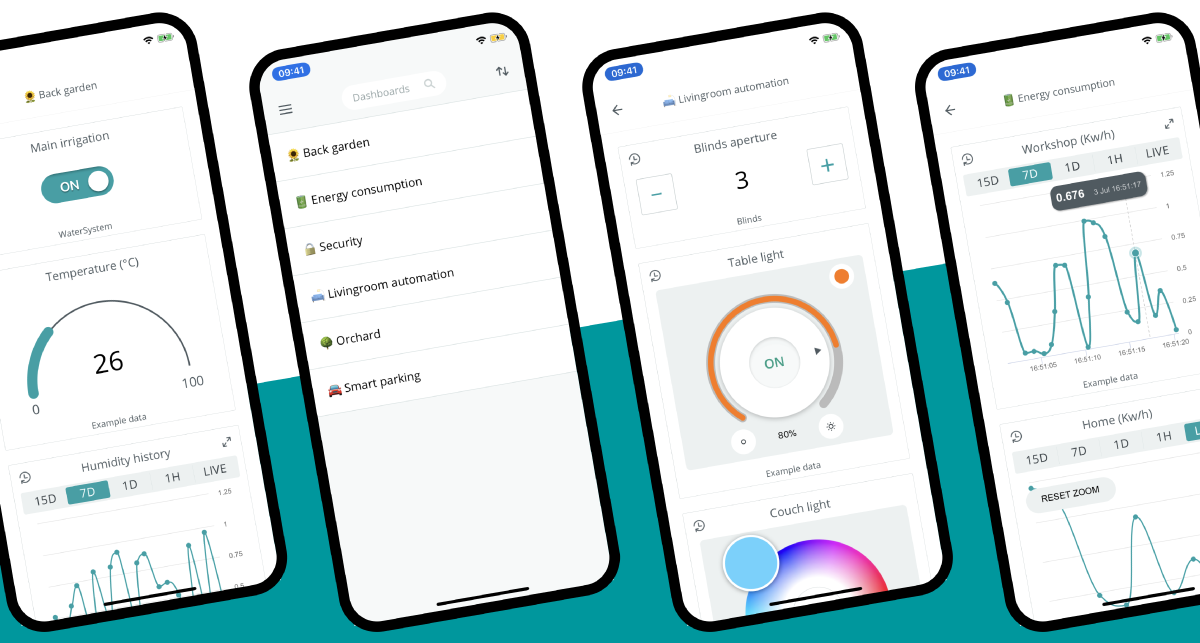Expert Guide: Best Remote IoT Login Solutions & Security
Are you grappling with the ever-expanding landscape of the Internet of Things (IoT), struggling to securely manage and control your devices from afar? The ability to remotely and securely access your IoT infrastructure is no longer a luxury, but an absolute necessity in today's interconnected world. It's the linchpin that allows you to maintain, monitor, and troubleshoot your devices, regardless of their physical location, ensuring smooth operations and data integrity.
The relentless evolution of IoT has spawned a diverse ecosystem of devices, from smart home gadgets to complex industrial machinery. This proliferation has, in turn, amplified the need for robust remote access solutions. Remote SSH login, a powerful tool in the arsenal of any IoT professional, offers a secure and efficient way to manage these devices. It allows for seamless communication, the ability to monitor performance metrics, and the capacity to execute commands, all from a centralized location.
Here's a brief table that helps summarize the key facts.
| Category | Details |
|---|---|
| Core Functionality | Remote SSH Login |
| Primary Use Case | Managing and securing IoT devices |
| Key Features | Secure communication, performance monitoring, command execution |
| Target Audience | Developers, Administrators, Hobbyists, Enterprises |
| Benefit | Centralized management, increased security, reduced downtime |
| Implementation Considerations | Device capabilities, security protocols, efficient management practices |
| Alternative | Eliminates the need for public IP addresses and port forwarding |
| Industry Adoption | Smart homes, industrial automation |
The core of this approach lies in the secure shell (SSH) protocol, a cornerstone of secure remote access. However, the success of remote SSH login for IoT isn't solely about technology. It's equally dependent on adhering to a set of best practices. These practices encompass everything from selecting the appropriate SSH implementations, based on device capabilities, to implementing robust security measures to prevent unauthorized access. Furthermore, the right solutions should combine these elements with efficient management strategies, making the entire process streamlined and effective. This holistic approach is the key to unlocking the full potential of remote IoT device login.
The advantages are clear: a comprehensive overview of all your IoT devices displayed on a single dashboard, the ability to remotely monitor vital metrics like CPU usage, memory allocation, and network performance, and the capacity to receive immediate alerts based on the data streaming from your IoT devices. Organizations gain unprecedented control, enabling them to maximize the benefits while simultaneously minimizing potential risks. It's a comprehensive strategy, encompassing control, security, and efficiency.
Remote IoT device login solutions are already experiencing widespread adoption across various industries. They're the backbone of smart home automation, offering homeowners the ability to control and monitor their devices remotely. In the industrial sector, they are deployed in factories and manufacturing plants, allowing for remote maintenance, troubleshooting, and predictive maintenance of complex machinery. From simple appliances to complex industrial equipment, the possibilities are vast.
As the IoT landscape continues to mature, remote SSH login will only increase in significance. It's the critical tool for ensuring the integrity of your infrastructure, irrespective of the scale. The ability to troubleshoot issues remotely can significantly reduce downtime, enhance efficiency, and minimize operational costs. Moreover, it provides a crucial layer of security, shielding your devices from potential threats.
The journey towards mastering remote SSH login involves several key steps. Firstly, understand the underlying technology: SSH, the secure shell protocol, is a cryptographic network protocol that secures communication. Secondly, evaluate your devices' capabilities. Choose an SSH implementation that's compatible with your devices. Next, implement robust security measures, including strong passwords, key-based authentication, and regular security audits. The best solutions integrate these measures with efficient management practices, such as centralized configuration and automated updates.
One significant advantage of remote SSH login is the elimination of the need for public IP addresses and port forwarding, streamlining the connection process and improving security posture. This simplifies your network configuration and shields your devices from direct exposure to the internet. This is particularly crucial in environments where security is paramount.
The key takeaways from this exploration are clear: choose appropriate SSH implementations that align with your device capabilities, implement rigorous security measures, and focus on efficient management practices. With these foundational steps in place, you can establish a secure and effective remote SSH login strategy tailored to your IoT needs. Your ability to centrally control, monitor, and secure your devices will be dramatically improved.
The ability to combine remote control functionalities with monitoring capabilities offers a powerful advantage. This integrated approach provides a holistic view of your IoT ecosystem, enabling proactive management and real-time response to any detected issues. Batch jobs can be executed remotely on the devices, automating tasks and streamlining your workflow. All these functionalities, seamlessly integrated, amplify operational efficiency.
The adoption of secure remote access should include careful consideration of both technical and operational factors. Selecting the right tools, implementing stringent security protocols, and training your team in best practices are all vital steps. This careful planning will lead to a robust, secure, and efficient remote access system that can be easily managed. These steps ensure security, facilitate efficient operations, and mitigate risks.
In conclusion, remote SSH login provides a powerful toolset for managing IoT devices. By following the best practices and staying informed of the latest technological advancements, you can establish a system thats both secure and scalable. The insights provided here will enable you to design and implement a secure and efficient strategy that optimizes your IoT environment. The benefits are numerous, ranging from enhanced control and security to reduced operational costs and improved device uptime.
By the end of this, youll be prepared to create the best remote IoT login solutions.

Arduino IoT Cloud Remote App Monitor and Control Your IoT solutions

Mastering Remote SSH Login For IoT Android Devices A Comprehensive Guide

How Do I Access My IoT Device Remotely? Robots